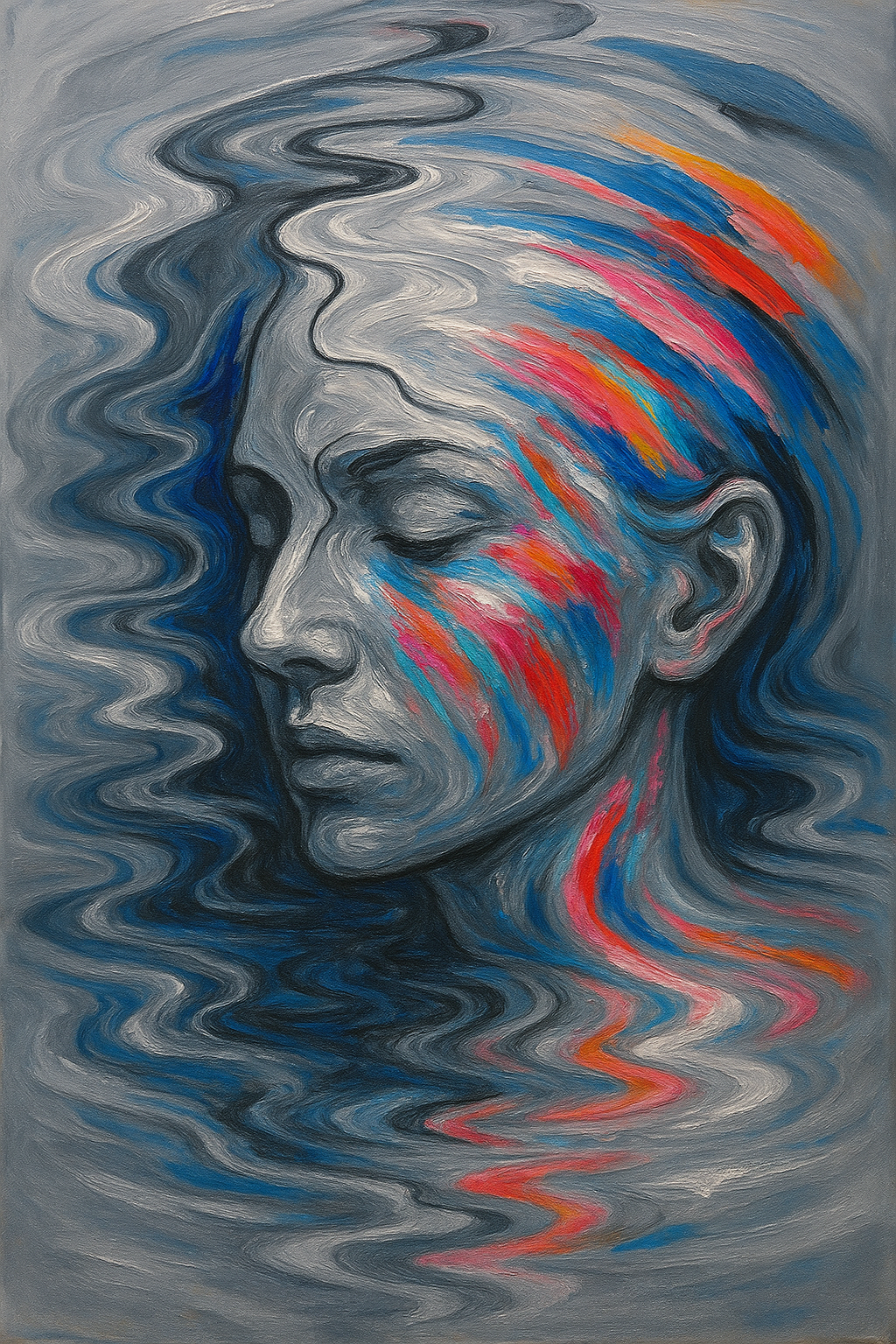Silence in the Mirror
Silence in the Mirror
Abstrakcja
Malarstwo współczesne and Portrety
Lead time
Lead time
⏳ Delivery time
The order processing time depends on: the production technique, the drying time of the paints, the size of the image and any hand-finishing and protection.
🖼️ Art print on canvas
-
High quality canvas printing :
- Canvas - synthetic canvas 260 g
- Natural Canvas - 260 g cotton canvas
- Stretching the canvas onto the frame
- Quality control and packaging
Total completion time:
🎨 Oil Giclée Reproduction (print + hand-finished)
-
Giclée print on canvas:
- Canvas premium - natural cotton canvas 360 g
- Pigment print drying
- Hand finishing: texturing and oil painting
- Paint drying (depending on layer thickness, medium type and format)
- Stretching the canvas onto the frame
- Quality control and packaging
Total completion time: –
🚚 Ready-made paintings – shipped within 24 hours
Our gallery has a special category called "Ready-Made Paintings" - these are works available immediately, already stretched on a frame or in a ready-made frame.
- They are 100% ready for immediate shipment
- Safe packaging in a reinforced cardboard box
Shipping takes place within: from the date of booking the order.
Image format: Reprodukcja Oil Giclée
Need a different size? Contact us.
Couldn't load pickup availability
1. Title
"Silence in the Mirror"
2. Description of the image
"Silence in the Mirror" is an abstract and emotional portrait of identity in dissolution. The face—calm, with closed eyes—exists not as a solid form, but as a wave. Contours dissolve into fluid lines, reminiscent of reflections on water. As if the person were not looking into a mirror, but rather were a mirror —in which, instead of a reflection, there is emotion. Color here is not decorative—it is a trace, a streak, a remnant of something intense and now fading. Pinks, blues, oranges, and navy blues act like smudged makeup or the memory of a feeling that is fading.
3. Technology
The painting appears to be painted with thick oil or acrylic paint on a textured canvas. The brushwork is spiral and fluid—each line appears to be part of a larger vortex. The color is applied in layers—as if someone were dragging a finger across a wet surface. The face emerges from these layers not as a silhouette but as an impulse—somewhere between form and sensation.
4. Style
Expressive surrealism with a touch of glitch aesthetics and dissolved form. The painting operates between figuration and abstraction. Inspiration can be found in the introspective art movement—where a portrait reflects not appearance but a mental state, an impression, a process. It is also an art of the body, which ceases to be a boundary—and becomes space.
5. Colors
A monochromatic base—cold silvers and grays—serves as a backdrop for dynamic, bright streaks. The colors have an emotional function: red and orange represent pain or passion, blue—the coldness of memory, pink—the fragility of intimacy. The palette juxtaposes the outer world with the inner—a mirror and a feeling.
6. Invoice
Soft, yet abrupt. The lines resemble water strokes on glass. The texture is sensual – inviting the eye to follow the waves, but also stopping it in unexpected places. The sense of depth makes the painting seem to "pulsate," breathing with the viewer.
7. Inspiration
This is a painting about the loss of form, about erased identity, about quiet decay. It may be inspired by both an intimate gesture—removing makeup after an emotional day—and the idea of a mirror that no longer reflects but reveals. In the spirit of introspection and self-analysis, the artist seems to be saying: "I am no longer this face. But I remember how it felt."
8. Message and interpretation
"Silence in the Mirror" is a story about the moment in between—between being and disappearing, between a feeling and its trace. It's a painting about how we appear to ourselves when no one is watching. Identity here isn't a mask, but a surface upon which layers of experience unfold. The painting asks: do we truly see ourselves, or just the emotions flowing through us?
9. Originality and authenticity
A work exceptional in its emotional vulnerability and formal dissolution. Authentic because it doesn't represent—it transforms. It doesn't tell us what a face looks like—but how it feels when it's no longer recognized. This is not just art for the eye—it's art for the interior.
✨ Sometimes what we see in the mirror isn't a reflection, but the last echo of an emotion. And that's what stays with us the longest. ✨
Share


